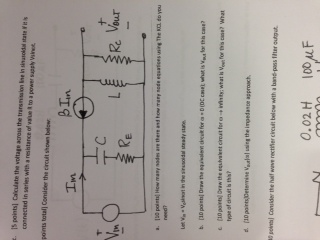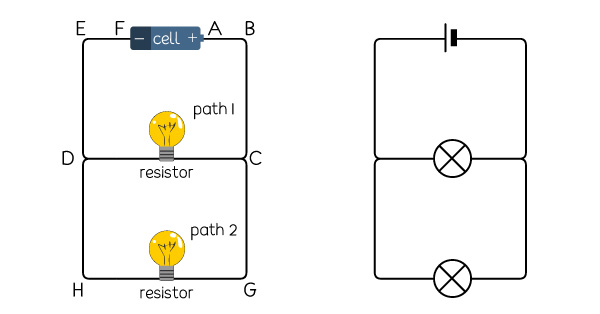

Whereas in parallel, resistors need to get a specific formula.
Parallel circuit definition series#
The difference between series and parallel circuits are:.A parallel circuit is a type of circuit that includes more than two separate paths, allowing the flow of current from the negative terminal of the component to the positive terminal of the component.A circuit with more than one resistance is known as a parallel circuit.DIFFERENCE BETWEEN PARALLEL AND SERIES CIRCUIT Total resistance is equal to the sum of individual resistance.ġ/R t = 1/R 1+1/R 2+1/R 3.The total current is the sum of the individual currents.The total voltage of a parallel circuit is equal to the voltage all across the circuit.The laws of parallel circuits state that: These paths allow the flow of current from the negative terminal of the component to the positive terminal of the component.A parallel circuit is the type of circuit that includes more than two separate paths.The parallel circuit is a very common and widely used circuit.

But what if the number of components are increased? MEANING OF PARALLEL CIRCUIT Let’s look at some really quick samples.When we compare series and parallel circuits, it is easy to analyze the circuit with only one battery and one load resistance. It also makes sense - if the electricity has to first flow through one resistor and then another, it has to push its way through the resistance of both of them. To simplify series resistors, simply add them together.
Parallel circuit definition how to#
Let’s go over how to do this and I’d like to state that this is only applicable to resistors, though the principles will transfer quite nicely to other components later.

Sometimes complex arrays of resistors or any other branches can be easily simplified if you can recognize things like that.īefore we get too excited, we do need to remember that not everything is in series or parallel, but it does crop up often enough that you not only should but almost certainly will become a natural at identifying and gaining insights from series and parallel circuits.īesides knowing that series branches share current and parallel branches have the same voltage across them, one of the big reasons parallel and series components are important is because you can typically simplify them. There are two resistors in series and those two resistors in series are in parallel with the single resistor. The third image makes things a bit more complicated, though. In the second image, even though there are more branches, all of them share the same two nodes, so they are all in parallel. Once again, some images will hopefully help.Īs you can easily see in the first and second image, these branches, once again represented by resistors, share both sides of their nodes. While the series devices have the same current through them, parallel devices have the same voltage across them. In this case, it doesn’t matter if other things are connected to either of those nodes - as long as the two-terminal elements have both elements connected to the same nodes, they’re in parallel. It’s important to note that just one of those resistors on the top is not in series with the bottom resistor, it’s that both of those resistors on top are in series with the single resistor below.įor branches to be in parallel, it’s when two or more two-terminal elements are connected to the same two nodes. Any current that flows through those top resistors will flow through the bottom resistor, so both those top resistors are in series with the bottom resistor. If you look at it in one way, grouping the top two resistors, then the top two resistors are in series with the bottom resistor. This is a more complicated example in that there is a single node that all three branches are connected to. In the second image, there are three branches, two resistors on top and one resistor on the bottom. Thus, any current that flows through one resistor is going to flow through the other. As you can see in the first image, there are two branches, both resistors, and there is a node between them that is exclusive to those two branches.


 0 kommentar(er)
0 kommentar(er)
